Kit History
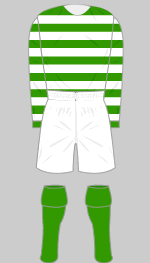
1903-1907 a b m n q
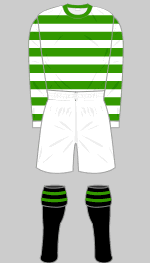
c1907-1908 o
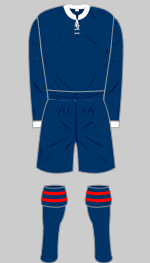
1908-1911 a b m
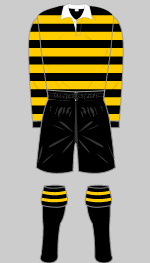
1911-circa1918 a b
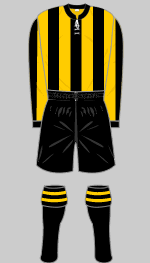
1918-1920 m
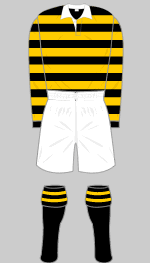
1920-1921 k m o
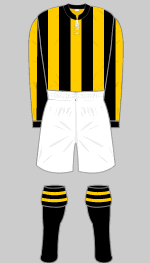
1922-1930 a m o
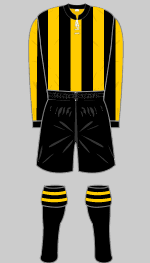
1927-1929 Away m o
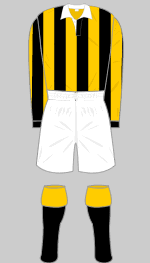
1932-1933 m
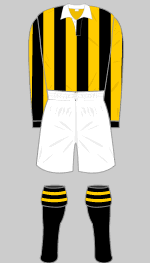
1935-1937 a c d m o
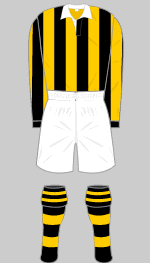
1937-1939 m o
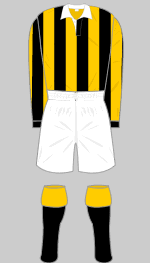
1945-Jan1947 m
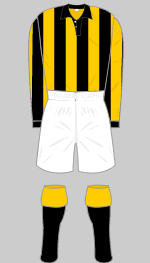
Jan-May 1947 m o
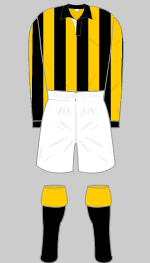
1947-1948 m o
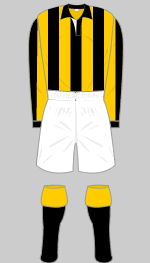
1949-1950 a
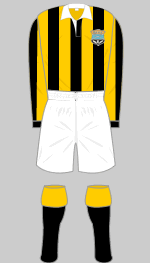
1950-1951 m r
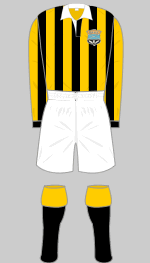
1951-1953 r
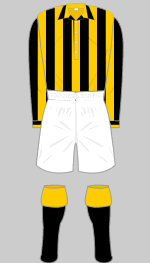
1953-1955 m o r
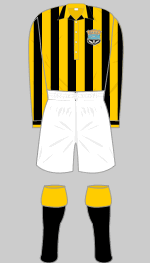
1955-1956 r
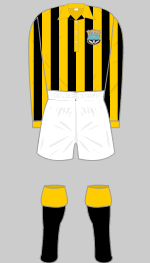
1956-1957 h m o r
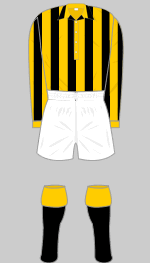
1957-1959 o r
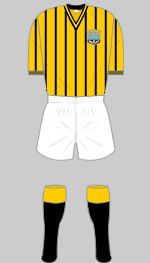
1960-1962 m
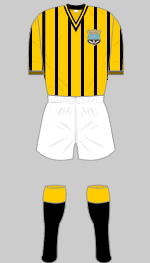
1962-1963 j m
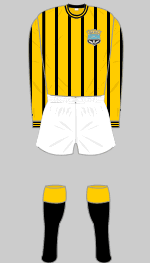
1963-1970 a j m s
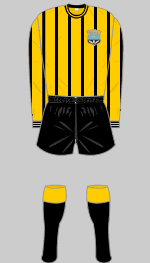
1963-1970 alt o s

1969-1970 alt m o
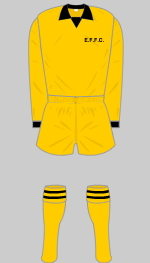
1970-1971 l t
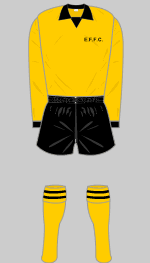
1971-1972 e m
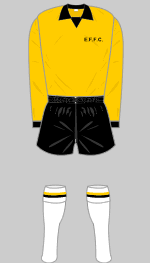
1972-1973 1 h m

1972-1973 2 r
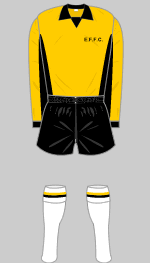
1972-1973 3 r

1972-1973 4 r

1973-1975 alt m
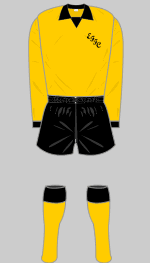
1973-1976 m o
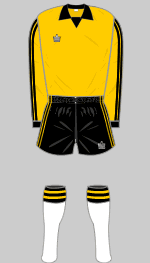
1976-Dec 1977 m
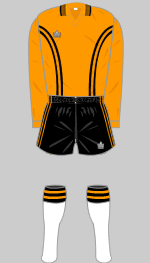
Dec 1977-1978 i j l m o r
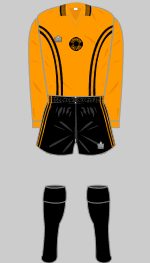
1978-1980 i j m o r
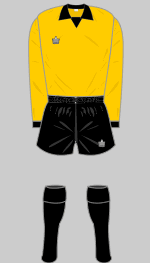
1980-1982 p
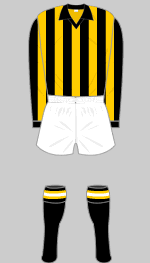
1982-1985 h i j
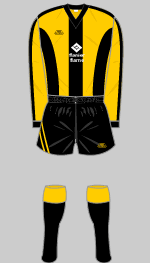
1985-1986 f o
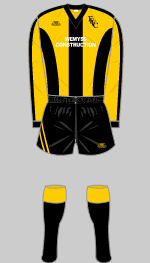
1986-1987 i o
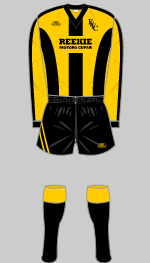
1987-1988 i o
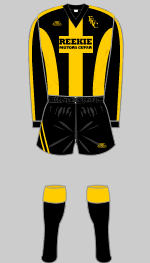
1988-1989 i o
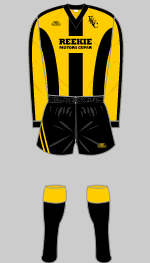
1989-1990 f i o
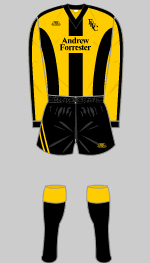
1990-1991 i o
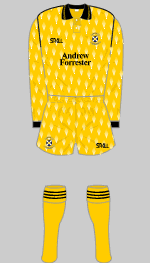
1991-1993 f i o
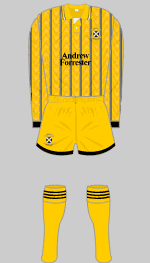
1993-1995 i o

1995-1996 f i
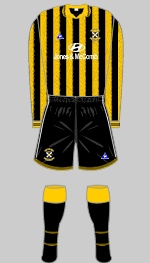
1996-1997 f o
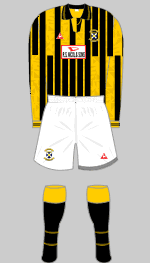
1997-1998 i o
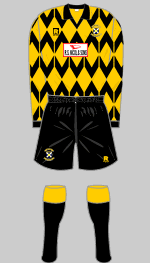
1998-2000 i
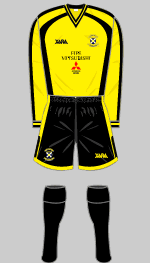
2000-2001 f g
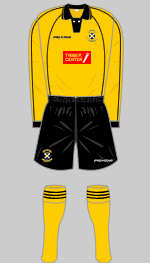
2001-2002 f o

2002-2003 f
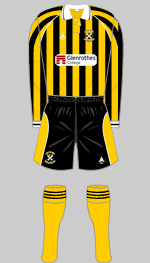
2003-2004 f
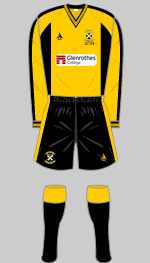
2004-2005 f o
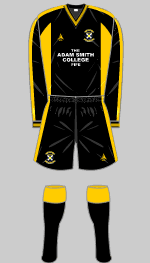
2005-2006 f o
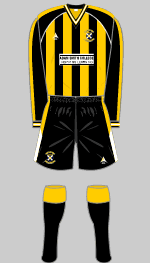
2006-2007 a f o
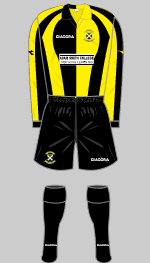
2007-2008 a f o

2008-2009 i
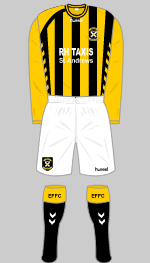
March-May 2009 i
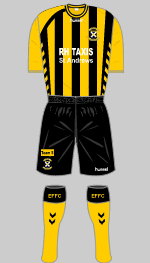
2009-2010 i
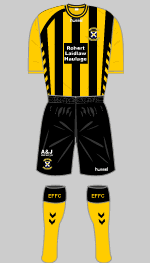
2010-2011 i
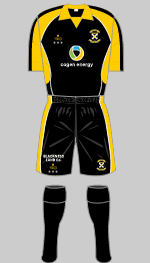
2011-2012 i
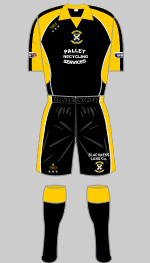
2012-2013 p
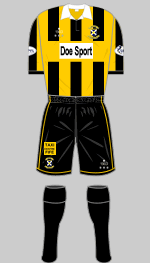
2013-2014 a r
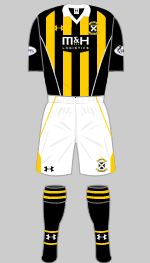
2014-2015 a
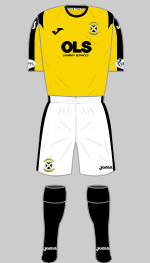
2015-2016 a
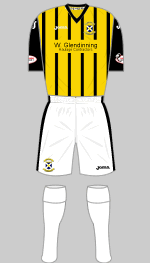
2016-2017 a
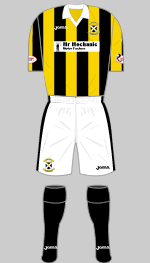
2017-Aug 2018 a
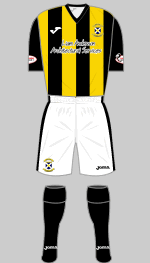
Sept 2018-2019 a
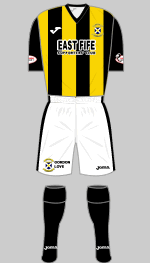
2019-2020 a
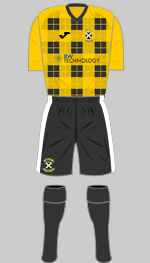
2020-2023 a
Background
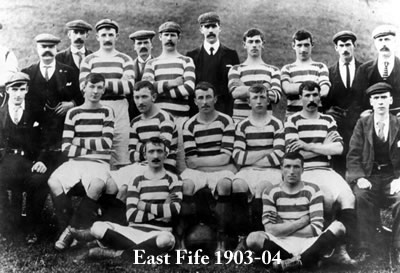 Although East Fife FC were
not formed until 1903, a number of football clubs had played
in and around Methil during the late nineteenth century. The first recorded
senior side were Leven FC (not to be confused with Vale of Leven from
Dunbartonshire), formed in 1889 but disbanded shortly afterwards. In
1902 the local newspaper cautioned that no one town in the area could
support a senior side and “such a team could only be done (sic)
by amalgamation with Wemyss or Leven,” In January 1903 a public
meeting was held in Methil “to discuss the formation of a senior
club for the East of Fife” and East Fife FC was born.
Although East Fife FC were
not formed until 1903, a number of football clubs had played
in and around Methil during the late nineteenth century. The first recorded
senior side were Leven FC (not to be confused with Vale of Leven from
Dunbartonshire), formed in 1889 but disbanded shortly afterwards. In
1902 the local newspaper cautioned that no one town in the area could
support a senior side and “such a team could only be done (sic)
by amalgamation with Wemyss or Leven,” In January 1903 a public
meeting was held in Methil “to discuss the formation of a senior
club for the East of Fife” and East Fife FC was born.
The new club adopted green and white hoops and took over Leven Thistle’s Town Hall Park ground, renaming it Bayview Park. In June 1904, after two applications to join the Northern League were rejected, East Fife helped form the Eastern League, which drew its members from Fife and the Lothians. A year later the club proposed to form the Central Football League, with membership expanded to Clackmannan. Alarmed that they might lose some of their own members to this new competition, the Northern League voted unanimously to invite East Fife to join their ranks.
In 1906 the club made the first of many unsuccessful applications to join the Scottish Football League Second Division. In 1909 the Northern League was weakened by the withdrawal of the Aberdeen and Dundee reserve sides so in March 1909, East Fife and five other Northern League clubs were instrumental in forming the new twelve-member Central League.
Early in 1911 the club faced closure after being forced to cancel two fixtures. The Fifers were saved by a decision to become a limited company, raising sufficient capital through a share issue to carry on. To mark this rebirth, the club adopted the gold and black colours that remain to this day.
In 1915, East Fife joined the Eastern League, a competition formed by members of the suspended Scottish League Second Division, rejoining the Central League when it restarted in 1919. That season, they won the Qualifying Cup, their first major trophy, beating Bo’ness in front of 18,600 spectators. By 1920 the Central League, bolstered by former Scottish League Second Division sides, became a real threat to the established Scottish League clubs, principally because of the high wages offered to players. In 1921, the Central League was incorporated as the reformed Scottish Second Division.
The club remained a modest mid-table side but in 1927 they reached the final of the Scottish FA Cup final where they went down 1-3 against Celtic after taking a shock lead. Three years later they won promotion for the first time, finishing behind Leith Athletic on goal average. Their first adventure at the top level ended in disappointment, when they finished in last place.
In 1938, the Fifers reached the Scottish Cup final once again where they met Kilmarnock. After the first match ended in a draw, East Fife ran out 4-2 winners in extra-time in the replay in front of 91,710 spectators to become the first and so far only Second Division side to have won the Scottish FA Cup.
Immediately after the Second World War, East
Fife enjoyed their most successful period to date. They won the “B”
Division at a canter and took the Scottish League Cup in 1948 and for
the next decade they were regarded as one of the top sides in the country,
narrowly missing out on winning the championship in 1954 after they
had led the table for most of the season. The disappointment of losing
in their third Scottish FA Cup final in 1950 was set off by further
success in the Scottish League Cup (1949-50 and 1953-54). 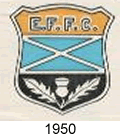 Their success
was all too brief, however, and in 1958 they were relegated back into
the Second Division.
Their success
was all too brief, however, and in 1958 they were relegated back into
the Second Division.
The club crest was worn for the first time in 1950, a somewhat pedestrian affair that included no local references apart from the club's initials.
During the 1960’s there was little to celebrate
and in 1970 the traditional crest was  dropped in favour of a simple horizontal cypher which was replaced after three seasons by a diagonal version in a flowing font.
dropped in favour of a simple horizontal cypher which was replaced after three seasons by a diagonal version in a flowing font.
In 1971 they were promoted back to Division One where they struggled
until relegated once more in 1974. In 1975 East Fife were placed in
the new First Division (second tier) following the creation of the Scottish
Premier Division and in 1978 they were relegated to the Second Division
(third tier) after a disastrous season. With home gates dwindling to
three figures, the 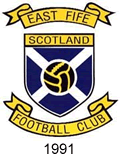 future seemed bleak indeed.
future seemed bleak indeed.
After six seasons in the lowest division, East Fife returned to Division One (second tier) in 1984 but they were relegated again in 1988.
In 1991 the club adopted a new crest which, like its predecessor, featured the Scottish saltire rather than any local iconography. In 1996 they returned to the First Division but finished a distant last and by the turn of the millennium, they were in the Third Division (fourth tier).
The club finally left Bayview Park in 1998 to move into the all-seated Bayview Stadium in the regenerated Methil Docks and in their centenary year of 2003, they won promotion, only to drop back into the Third Division immediately. On 15 March 2008, East Fife beat East Stirlingshire to become the first team in the UK to win a league title and promotion back to the Scottish Second Division.
In 2022-23 East Fife were back in the lowest tier after finishing botom of League One.
With acknowledgements to Jim Corstorphine's excellent history on the East Fife FC Official Site.
Sources
- (a) East Fife FC Official Site
- (b) Brian McColl
- (c) London Hearts
- (d) Historic Saints of Edinburgh (George Campbell 1983) provided by Stuart Swan.
- (e) Riccardo Bertani
- (f) SNSpix
- (g) Classic Kits
- (h) e-bay
- (i) Graeme Houston - HFK Research Associate
- (j) Donald Walker
- (k) East Fife Football Historian
- (l) Ralph Pomeroy
- (m) Alick Milne - HFK Research Associate
- (n) On That Windswept Plain (James Corstorphine)
- (o) Away from the Numbers - a fine collection of old team photographs but now taken down
- (p) Donald Gellatly
- (q) Keith Ellis (HFK Research Associate)
- (r) Ian McConnel
- (s) Brian Wright
- (t) @eastfifefc
Crests are the property of East Fife FC.
